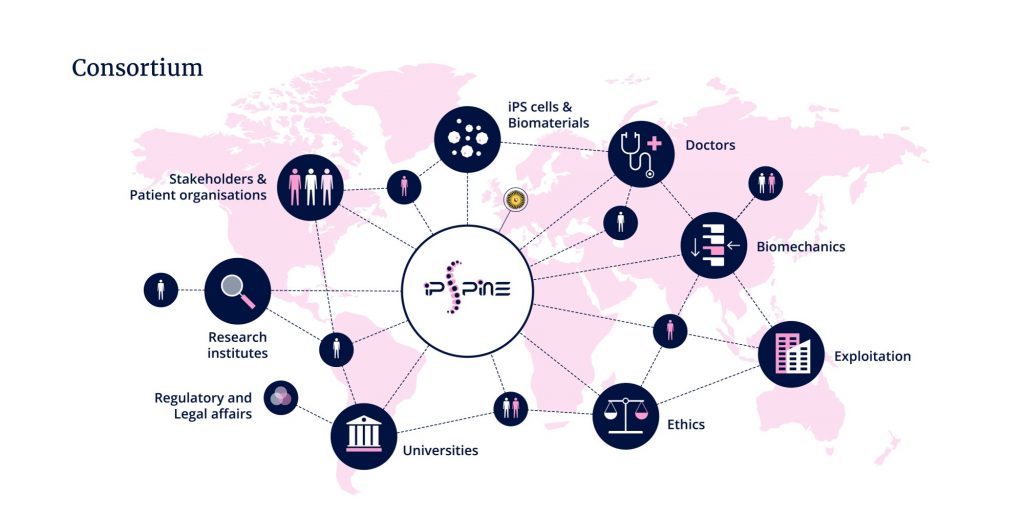
Chronic lower back pain (LBP) is a leading cause of disability and morbidity worldwide.. Although there are many causes of LBP, one major cause is the degeneration of the spine’s intervertebral discs (IVDs). This condition makes up around 40%, or 280 million, LBP cases. This leads to an economic burden in the EU of around ~€240 billion. Despite the large impact, patients with this type of LBP only have a few options for treatment, such as pain relief medication and physiotherapy. If these don’t help, the last remaining option is invasive and costly surgery. There are no treatments yet that can stop or reverse this condition. The best potential treatment for chronic LBP is to address the pain and rejuvenate the degenerated tissue for long lasting effects.
The iPSpine partners, which include both universities and companies, joined together to begin researching a new, advanced therapy for the treatment of LBP caused by disc deterioration. The aim of this project is to investigate and develop a new advanced biological therapy using a type of cell called an induced pluripotent stem cell (iPSC). These cells are created by re-programming fully mature cells, such as cells from your blood or skin, into spine-specific cells. Only a few mature cells are needed to create a large quantity of iPSCs. These iPSCs are then differentiated into disc cells that can repopulate the group of original cells that have degenerated. Over the next five years, the iPSpine partners want to show that iPSCs can work as a therapeutic strategy. This will start with basic laboratory research to create the cells and will continue on into a preclinical animal model. By the end of the project, the therapy should be ready for advancement to the first clinical trial in people.
The iPSpine impact: iPSpine wants to offer novel technology for research in the field of advanced therapy. Using spinal disc degeneration as an example, iPSpine hopes to offer improved quality of life for millions of patients, through long-lasting reduction of LBP, reduced rates of early retirement, and socio-economic improvement.


